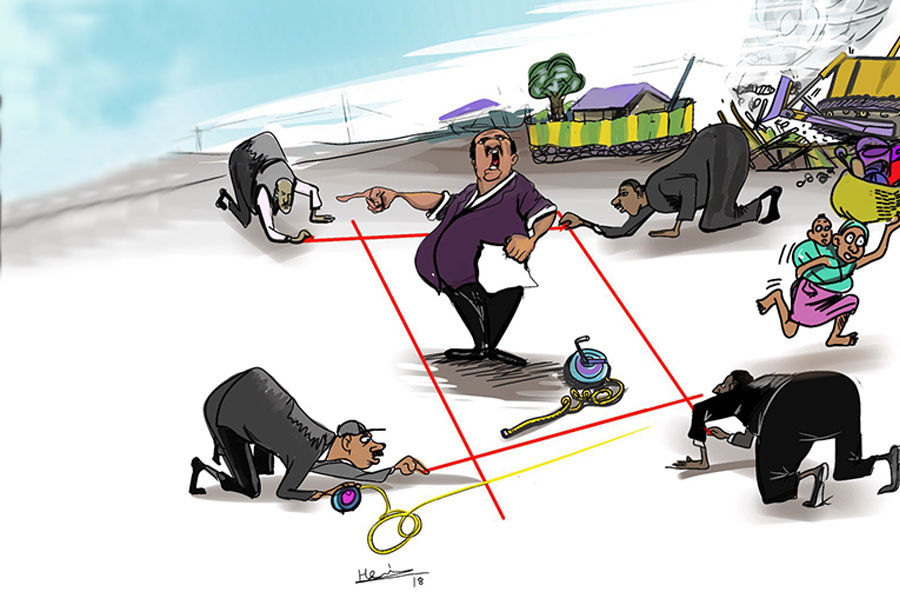Central Bank regulators would merge commercial banks’ reserve and payment accounts, a departure that will grant lenders greater flexibility in handling daily cash obligations.
The National Bank of Ethiopia (NBE) published the proposal for public consultation, which also introduces a system of partial reserve averaging. Rather than meeting a fixed daily reserve requirement, the new arrangement would allow banks to hold an average balance over a set period to better manage short-term liquidity.
Currently, banks are required to keep reserves separate from payment accounts, tying up cash that could otherwise be put to work. Under the new arrangement, these funds would be combined into a single reserve account, lowering administrative barriers and offering a unified view of liquidity. The authorities want an annual minimum reserve ratio of seven percent of net deposits, covering both local and foreign currency.
Banks are mandated to hold at least five per cent of daily deposit liabilities during each reserve maintenance period, which starts on the first Thursday of each month and ends on the first Wednesday of the following month. They are also required to maintain an average reserve in their payment and settlement account equal to seven percent of the previous month’s average daily reserve base.
According to Martha Hailemariam, advisor to the Vice Governor, the revised arrangement is part of a broader effort to ease rigid rules that have, at times, constrained banks trying to handle urgent payment needs.
“The requirements for liquidity management have been relaxed,” she said.
The Central Bank has introduced additional measures to streamline liquidity management, including allowing commercial banks to trade liquidity among themselves in the interbank money market. By borrowing and lending against their excess reserves, banks can more efficiently address short-term gaps. According to its recent reports, 183 billion Br in liquidity has changed hands in this market.
However, daily requirements remain firmly in place, and penalties loom for non-compliance. Under the proposal, failing to meet obligations triggers a fine calculated at seven percentage points above the Central Bank's standing lending facility rate, applied for each day a bank falls short. Lenders also face a 20,000 Br penalty for every day they miss submitting monthly reserve reports after each calendar month.
Another change revises how reserves are calculated. Instead of relying on net deposit balances at the end of each reporting week, officials will use a monthly daily average reserve base, encompassing all domestic and foreign deposit liabilities. Total deposits in the commercial banking industry reached 2.5 trillion Br by June 2024. Though liquidity ratios stay above required minimums, a stress test showed potential risks if the top 10 depositors at each bank withdrew their funds all at once.
According to the International Monetary Fund (IMF), nearly 90pc of central banks worldwide employ reserve requirements to keep a portion of deposits on hand, promoting stability and guiding monetary policy. In Ethiopia, the shift is seen as an attempt to lessen liquidity pressures without undermining the safety net that these reserves provide.
Bank executives largely support the merger of accounts.
Siinqee Bank holds deposits of 73 billion Br from roughly 7.3 million clients, making the proposed flexibility appealing to its executives.
“Every cent matters to banks,” said Siinqee Bank President Neway Megersa, who called the policy a long-overdue improvement.
He observed excess reserves accumulate because transferring funds to settlement accounts has been cumbersome, tying up assets that could otherwise be allocated timely.
Siinqee also lent 84 billion Br through the inter-bank money market.
Nonetheless, experts caution that reserve requirements remain crucial to protecting depositor funds, mainly when liquidity management is uneven across banks.
“Central banks worldwide use reserve requirements as a key tool for financial stability,” said financial expert Worku Lemma.
He attributed the declining inflation rate — down to about 16pc last month from 20pc year-on-year — to a tight monetary policy that has constrained the money supply. He urged policymakers to refine the lending cap framework rather than imposing uniform limitations.
"Requiring banks to keep more deposits in reserve can slow loan creation," Worku told Fortune. "It can reduce liquidity in the broader system."
Worku also urged banks to address stagnating deposits and meet rising demand for credit. Instead of investing heavily in new branches, he recommended exploring agency banking, referring to Kenya’s success in tapping unbanked populations through agents.
“Branch expansion is not the way anymore,” he said.
PUBLISHED ON
Mar 02, 2025 [ VOL
25 , NO
1296]

Dec 22 , 2024 . By TIZITA SHEWAFERAW
Charged with transforming colossal state-owned enterprises into modern and competitiv...

Aug 18 , 2024 . By AKSAH ITALO
Although predictable Yonas Zerihun's job in the ride-hailing service is not immune to...

Jul 28 , 2024 . By TIZITA SHEWAFERAW
Unhabitual, perhaps too many, Samuel Gebreyohannes, 38, used to occasionally enjoy a couple of beers at breakfast. However, he recently swit...

Jul 13 , 2024 . By AKSAH ITALO
Investors who rely on tractors, trucks, and field vehicles for commuting, transporting commodities, and f...

Oct 11 , 2025
Ladislas Farago, a roving Associated Press (AP) correspondent, arrived in Ethiopia in...

Oct 4 , 2025
Eyob Tekalegn (PhD) had been in the Governor's chair for only weeks when, on Septembe...

Sep 27 , 2025
Four years into an experiment with “shock therapy” in education, the national moo...

Sep 20 , 2025
Getachew Reda's return to the national stage was always going to stir attention. Once...